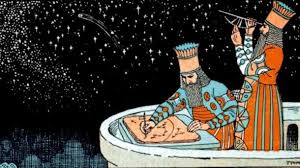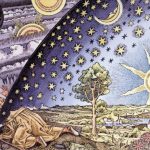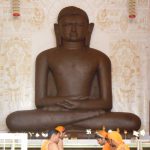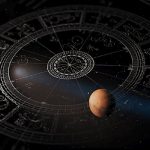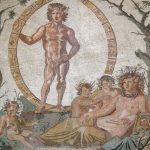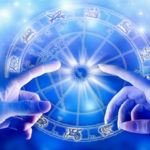There are many classical texts on astrology. Many of them are popular regionally and some are exclusively used only in certain types of astrology. However, certain classics are held in reverence by most astrologers.
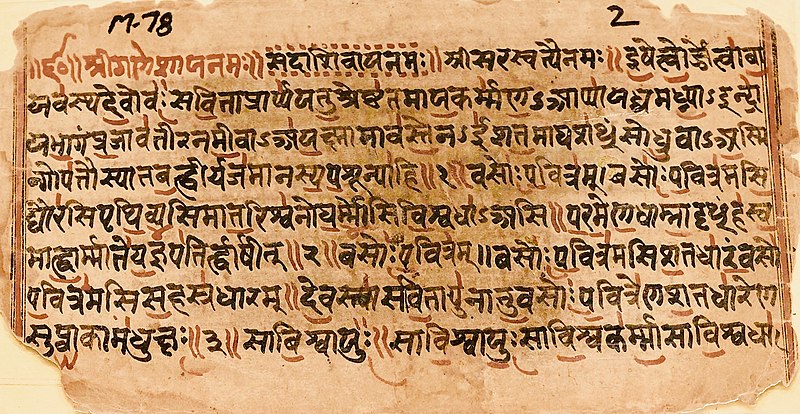
Brihat Parashara Hora Shashtra Texts On Astrology
The Brihat Parashara Hora Shashtra is a classic that is so popular that it is actually known by the abbreviation BPHS. Parashara is the author of this great text. He wrote 100 chapters of it but the full form of the work no longer exists.
Brihat Jataka
Varahamihira is the author of the Brihat Jataka, one of the great Vedic texts on astrology. He was the famous astrologer in the court of King Vikramaditya in 57BC. He was not only a great astrologer but also an astronomer and the first author to mention Ayanamsa. Varahamihira based his text Pancha Siddhantika on the ancient Siddhantas and mentioned a shifting of the equinox (Ayanamsa) of 50.32 seconds. This book is also noteworthy for addressing the topic of profession in just four shlokas. This might be short but it is nothing short of genius. He is also the author of the Brihat Samhita.

Brihat Samhita
Varahamihira also wrote the ancient astrology text Brihat Samhita which has two parts Pratham Khand and Dwitya Khand. It is used to predict for nations or countries.
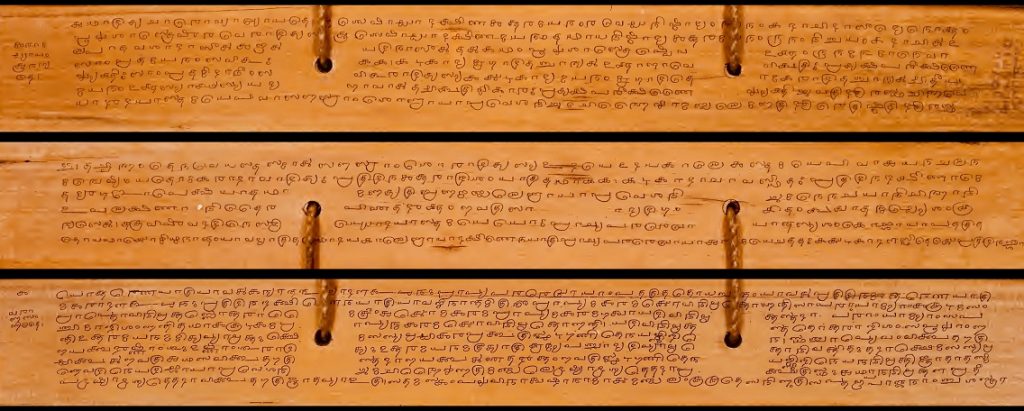
Bhrigu Samhita
Maharishi Bhrigu, one of the Saptarishis wrote the Bhrigu Samhita. It is one of the Vedic astrological texts on astrology that addressed the study of past, current and also future lives based on the study of horoscopes. It has a huge compilation of sample horoscopes that he has analysed. This is invaluable for a student of astrology to study and analyse horoscopes.
Saravali
Kalyana Varma, also known as Kamadeva, wrote this work. He was a king of Vyaghrapada which is somewhere in present-day Gujarat. Saravali is a compilation of Vedic astrology. It dates to 800 CE after the Brihat Parashara Hora Shashtra. It seems like the author had studied texts on astrology by Varahamihira, Yavana and Parashara and found them too brief. He has elaborated on the principles of ancient texts on astrology further in his book. It is a book that is an essential part of an astrologer’s education. There is much information particularly on conjunctions, Raja yogas and Dashas.
Phaldeepika
Shri Mantreswara is the author of this compilation. It dates to the 16th century. He refers to other astrologers such as Parasara and Varahamihira showing that he had studied their works thoroughly. It has addressed an exhaustive list of different facets of human life.
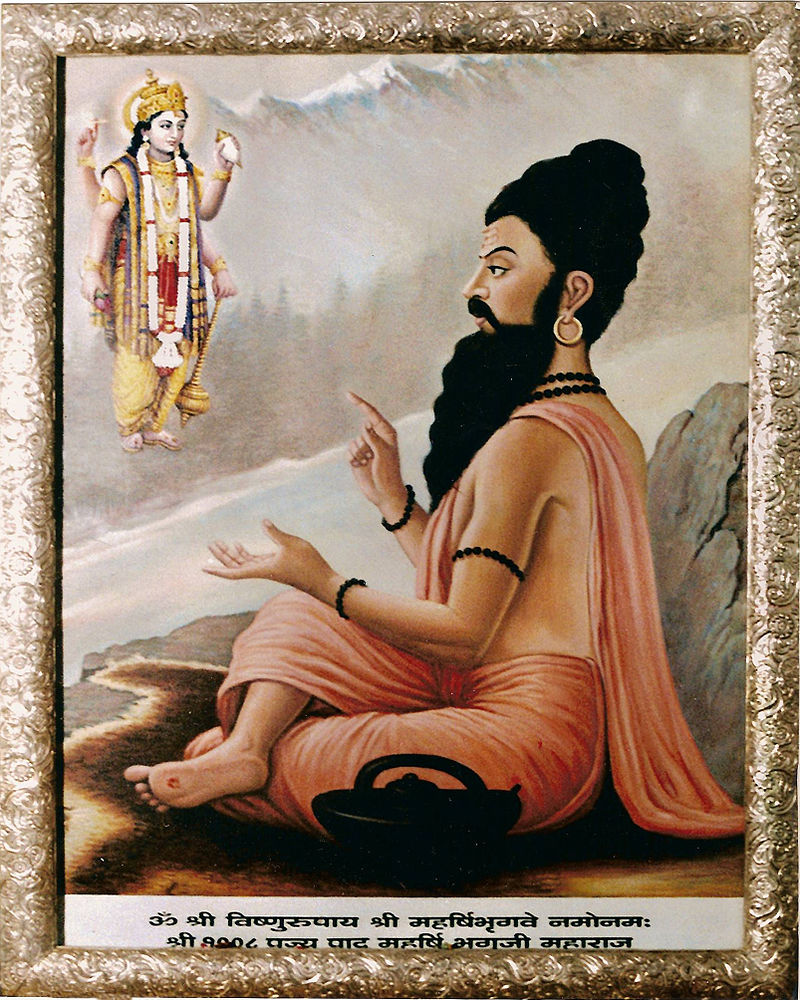
Maharishi Bhrigu, one of the Saptarishis
Jatak Parijaat
Sri Vaidyanatba Dikshita authored the Jatak Parijaat. His father Venkatadri was also a great scholar. This book is still one of the foundation books for students of Vedic astrology. It covers many topics in great detail. Some of the topics are Yogas, Ayurdaya, Bhavaphala, Vimshottari, Kalachakra Dasha, Ashtakvarga, etc. This work has been translated to many regional languages and is respected by astrologers across the country.
Sarvatha Chintamani
Sarvatha Chintamani means the gem of superior desires or thoughts. Venkatesa Sarma wrote this book in the 13th Century A.D in Sanskrit and it is one of the most important ancient texts on astrology. Sarvatha Chintamani explains planets and their effects as well as the distinction of malefic and benefic effects in great detail. The book explains the houses and their significance as well as results in a unique manner. This work expands on Varahamihira’s verses on the profession of the native. The book covers predictive astrology in 17 chapters.
Ashtak Varga Nibandh
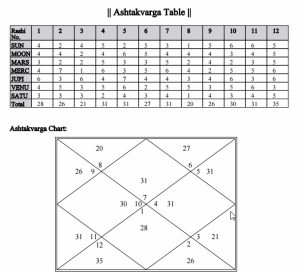
Horoscope With Ashtakvarga Table
The ancient Rishis developed the Ashtakvarga system to study and define the strength of the planets and their contribution to each house. Ashtakvarga is still used to study the effects of a planet in transit on a person’s life. This system is purely mathematical and is also unique to Vedic astrology. Even Prithyusha the son of Varamihira stressed the importance of Ashtakvarga. This texts on astrology also show how to calculate the life span of the native with a mathematical system and to also study the Ashtakvarga Bindus to see the life pattern of the native. The principles and theories stated apply logic to astrology. This book is also valuable for its mathematical approach to astrology.
Bhavartha Ratnakar
Ramanuja wrote the Bhavartha Ratnakar. South Indian astrologers used this book for a long time. Bhavartha Ratnakar gives rules that are not in other texts. These rules have been found to be very useful and also revealing by great astrology scholars.
Tajik Neelkanthi – Ancient Texts On Astrology
Tajik Neelkanthi is a translation from Arabic/Persian by Neelkantha, son of Shrimad Anant Daivajna in 1544 CE. Tajika astrology or Varshaphala is based on these texts on astrology. It is of Arab origin. Tajik Neelkanthi covers the concepts of Sahams and also the Dasha system that is unique to Tajika astrology. Tajika astrology predicts the events of one year which are based on the Solar return chart as well as the natal chart.




